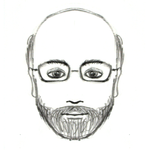- JMP will suspend normal business operations for our Winter Holiday beginning on Wednesday, Dec. 24, 2025, at 5:00 p.m. ET (2:00 p.m. ET for JMP Accounts Receivable).
Regular business hours will resume at 9:00 a.m. EST on Friday, Jan. 2, 2026. - We’re retiring the File Exchange at the end of this year. The JMP Marketplace is now your destination for add-ins and extensions.
- Subscribe to RSS Feed
- Mark Topic as New
- Mark Topic as Read
- Float this Topic for Current User
- Bookmark
- Subscribe
- Mute
- Printer Friendly Page
Discussions
Solve problems, and share tips and tricks with other JMP users.- JMP User Community
- :
- Discussions
- :
- Density based clustering?
- Mark as New
- Bookmark
- Subscribe
- Mute
- Subscribe to RSS Feed
- Get Direct Link
- Report Inappropriate Content
Density based clustering?
Is it possible to separate the concentric circles shown in the example table below using any of the clustering methods in JMP? There is already a JMP Wish List request for DBSCAN, or density based spatial clustering of applications with noise, which could do this. Am I missing any existing functionality?
Wish list item:density based clustering
Script to create example data table:
New Table( "Cluster Circles", Add Rows( 500 ), New Script( "x by y", Graph Builder( Size( 527, 456 ), Show Control Panel( 0 ), Variables( X( :x ), Y( :y ), Color( :actual cluster ) ), Elements( Points( X, Y, Legend( 5 ) ) ) ) ), New Column( "x", Numeric, "Continuous", Format( "Best", 12 ), Formula( If( :actual cluster == 1, 2, 1 ) * :random noise * Cos( :random ) ) ), New Column( "y", Numeric, "Continuous", Format( "Best", 12 ), Formula( If( :actual cluster == 1, 2, 1 ) * :random noise * Sin( :random ) ) ), New Column( "random", Numeric, "Continuous", Format( "Best", 12 ), Formula( Random Uniform( 0, 2 * Pi() ) ) ), New Column( "random noise", Numeric, "Continuous", Format( "Best", 12 ), Formula( Random Normal( 1, 0.05 ) ) ), New Column( "actual cluster", Numeric, "Nominal", Format( "Best", 12 ), Formula( Floor( Random Uniform( 0, 1.99999 ) ) ), Set Selected ) )
I know I could train a model to do this if I saw the relationship visually and wanted to just score points against it but I want an unsupervised method to do this.
Here is another example dataset:
New Table( "Cluster Circles 2", Add Rows( 500 ), New Script( "x by y", Graph Builder( Size( 527, 456 ), Show Control Panel( 0 ), Variables( X( :x ), Y( :y ), Color( :actual cluster ) ), Elements( Points( X, Y, Legend( 5 ) ) ) ) ), New Column( "x", Numeric, "Continuous", Format( "Best", 12 ), Formula( If( :actual cluster == 1, 2 * :random noise * Cos( :random ), 1 * :random noise * Cos( :random / 2 ) + 0.1 ) ) ), New Column( "y", Numeric, "Continuous", Format( "Best", 12 ), Formula( If( :actual cluster == 1, 2 * :random noise * Sin( :random ), 1 * :random noise * Sin( :random / 2 ) + 0.1 ) ), Set Selected ), New Column( "random", Numeric, "Continuous", Format( "Best", 12 ), Formula( Random Uniform( 0, 0.8 * Pi() ) ) ), New Column( "random noise", Numeric, "Continuous", Format( "Best", 12 ), Formula( Random Normal( 1, 0.1 ) ) ), New Column( "actual cluster", Numeric, "Nominal", Format( "Best", 12 ), Formula( Floor( Random Uniform( 0, 1.99999 ) ) ) ) )
- Mark as New
- Bookmark
- Subscribe
- Mute
- Subscribe to RSS Feed
- Get Direct Link
- Report Inappropriate Content
Re: Density based clustering?
Have considered transforming your data in polar coordinates and then cluster on R and alpha? At least with your example data, it does a pretty good job.
Cheers,
TS
- Mark as New
- Bookmark
- Subscribe
- Mute
- Subscribe to RSS Feed
- Get Direct Link
- Report Inappropriate Content
Re: Density based clustering?
bivariate nonpar density
then select points by density
- Mark as New
- Bookmark
- Subscribe
- Mute
- Subscribe to RSS Feed
- Get Direct Link
- Report Inappropriate Content
Re: Density based clustering?
Also, the hierarchical single-linkage method worked perfectly on the disjoint rings. Not the 2nd example though.
- Mark as New
- Bookmark
- Subscribe
- Mute
- Subscribe to RSS Feed
- Get Direct Link
- Report Inappropriate Content
Re: Density based clustering?
Good find @Craige_Hales ,
I was confused how I missed this after trying all methods but now I see there is a bug in the platform so saving the cluster gives a good separation for the rings, but saving the cluster formula shows a different result. As you mentioned, while I will find the useful it doesn't quite work in my actual application.
Thank you!
- Mark as New
- Bookmark
- Subscribe
- Mute
- Subscribe to RSS Feed
- Get Direct Link
- Report Inappropriate Content
Re: Density based clustering?
I did not know this feature existed! Unfortunately it seems to select the high density regions of all clusters which, while handy, isn't quite what I am looking for.
Thanks!
- Mark as New
- Bookmark
- Subscribe
- Mute
- Subscribe to RSS Feed
- Get Direct Link
- Report Inappropriate Content
Re: Density based clustering?
Hi and thank you @Thierry_S,
Yes indeed transforming to polar would give a great separation for both of these datasets. The problem is that only works for this example data set and it really is closer to a supervised method than I'm hoping for. I used the rings because they illustrate my struggle with existing methods, but in fact the real data is messier, in more dimensions, and a simple transformation wouldn't quite do the job.
As a plug to get more folks to vote for the density based clustering wish list item, check out how it compares to different methods at the link below. I can attest to seeing similar performance in some situations.
https://towardsdatascience.com/how-dbscan-works-and-why-should-i-use-it-443b4a191c80
- Mark as New
- Bookmark
- Subscribe
- Mute
- Subscribe to RSS Feed
- Get Direct Link
- Report Inappropriate Content
Re: Density based clustering?
The wikipedia code and JMP's KDTable function look like they could do this. It might be pretty fast since the KDTable lookup would be doing a lot of the work.
@DonMcCormackthis could be a good challenge, especially the part where it is turned into an add-in with a proper launch dialog and place in the menu system.
- Mark as New
- Bookmark
- Subscribe
- Mute
- Subscribe to RSS Feed
- Get Direct Link
- Report Inappropriate Content
Re: Density based clustering?
The wikipedia algorithm seems to work. Not sure why it needs to use weird notation like
SeedSet S := N \ {P} but maybe that's standard set notation for remove P from the set N?
I ran it a bunch of times on random data and got results like this for a ring and 10 randomly placed clusters

It might get too slow around 10,000 points, depending on the data and eps parameter. I'm not sure it qualifies as unsupervised; I spent a fair amount of time picking eps and minpts to get these graphs to work this well.
Recommended Articles
- © 2025 JMP Statistical Discovery LLC. All Rights Reserved.
- Terms of Use
- Privacy Statement
- Contact Us






